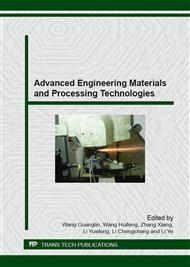p.500
p.506
p.512
p.518
p.524
p.530
p.536
p.542
p.548
Research on the Best Autofrettage Pressure of Ultra-High Pressure Valve Body
Abstract:
This paper takes the ultra-high pressure (103.5MPa) valve body as the research object and adopts the finite element method to perform simulation analysis on the three bearing conditions involved with the valve body, i.e., autofrettage pressure, discharge and working pressure. The simulation shows identical results with the theoretical calculation. The relationship between the maximum equivalent stress and autofrettage pressure during the operation of the valve is obtained from the simulation results; therefore the best autofrettage pressure is determined. When determining the maximum value of autofrettage pressure, the maximum pressure, at which reverse yield does not happen, and the complete yield pressure shall be taken into consideration, with the smaller value of the two taken after comparison and analysis. When the size of the valve body is fixed at certain value, the best autofrettage pressure is not a fixed value, but it varies with the change of working pressure.
Info:
Periodical:
Pages:
524-529
Citation:
Online since:
October 2015
Authors:
Price:
Сopyright:
© 2016 Trans Tech Publications Ltd. All Rights Reserved
Share:
Citation:


